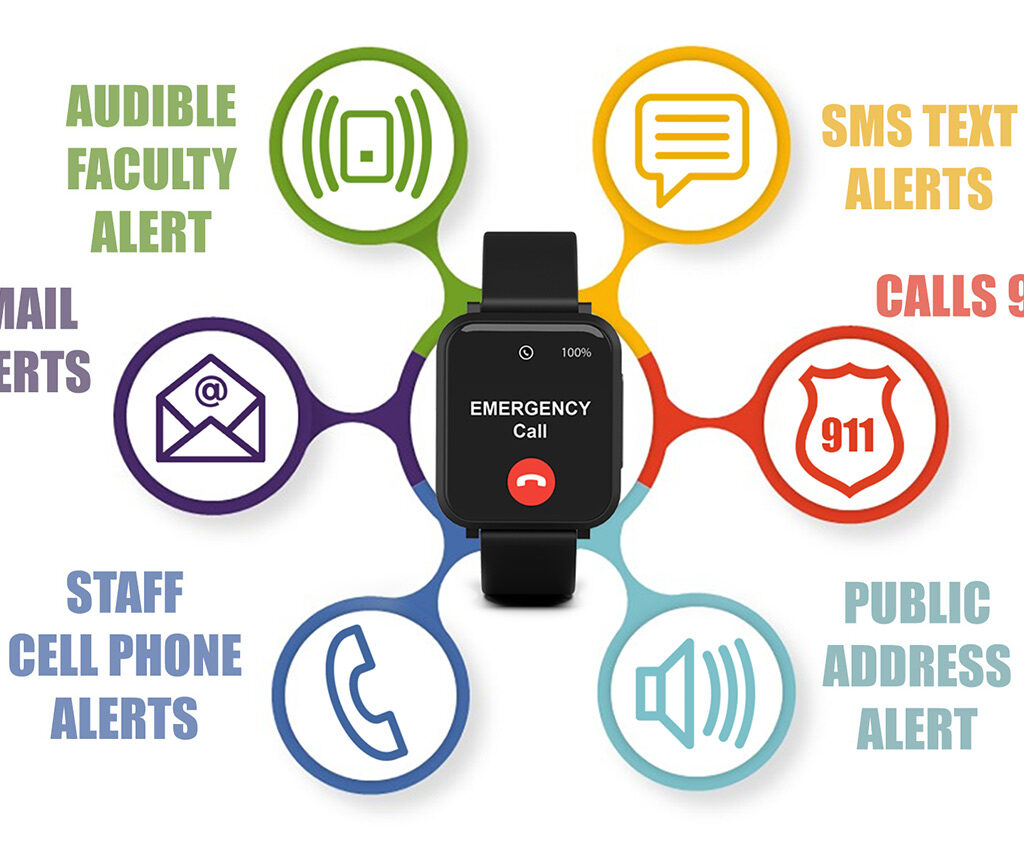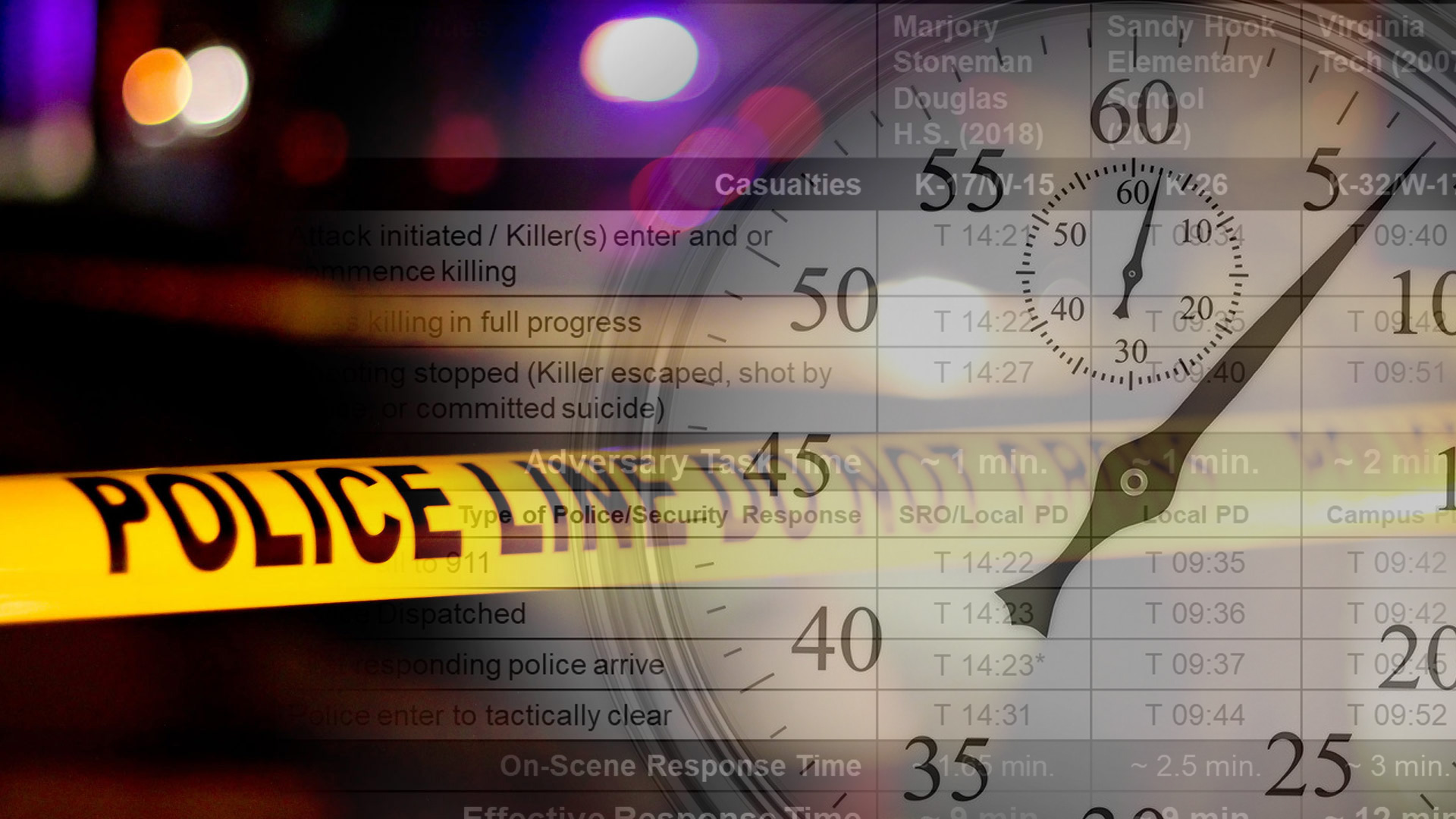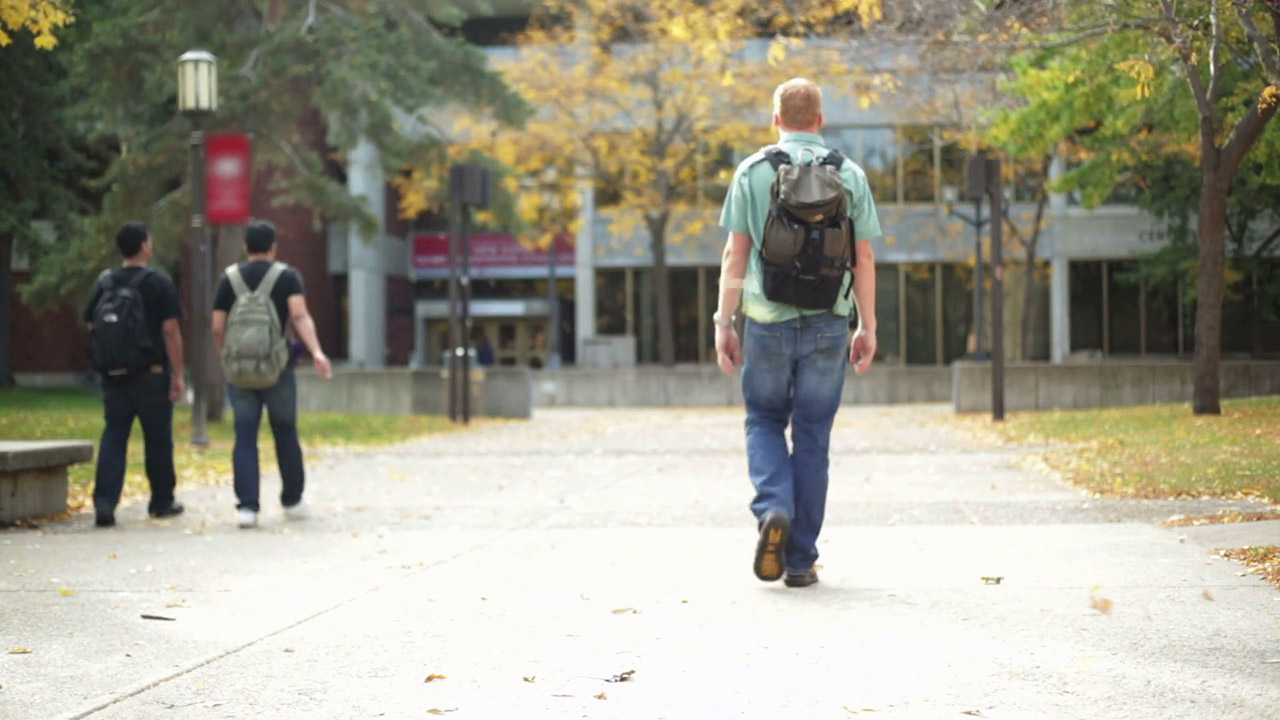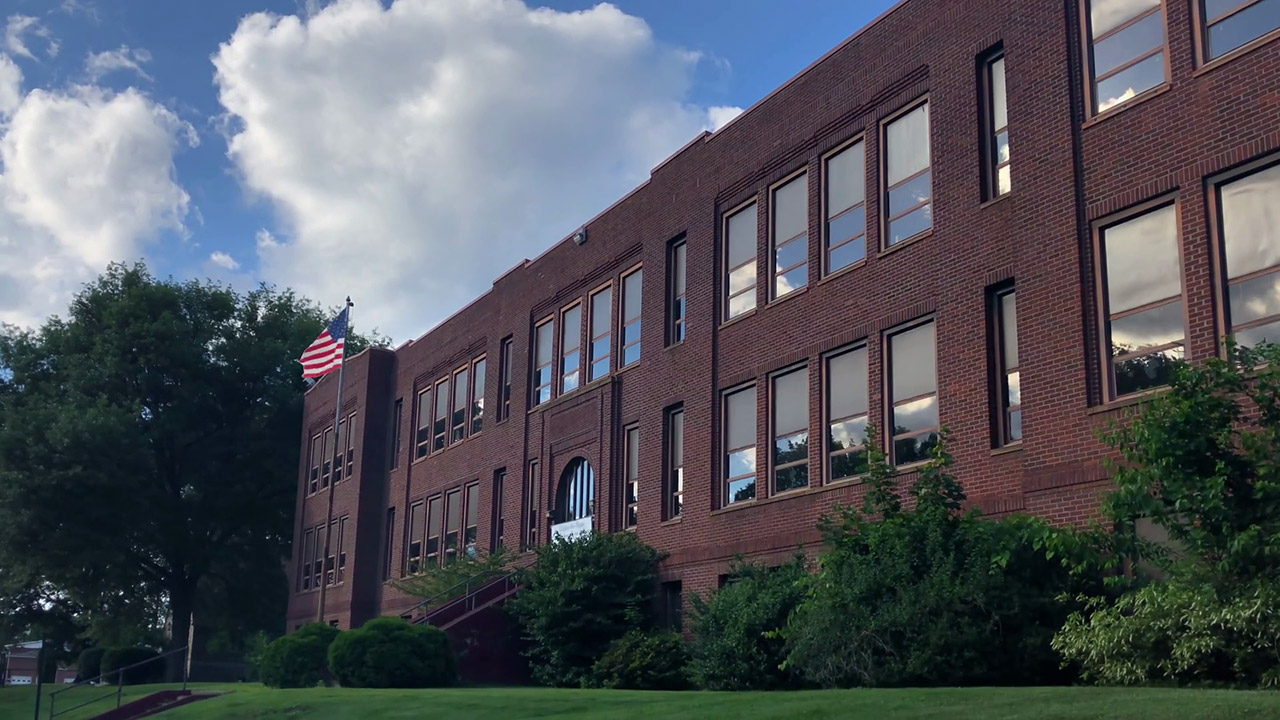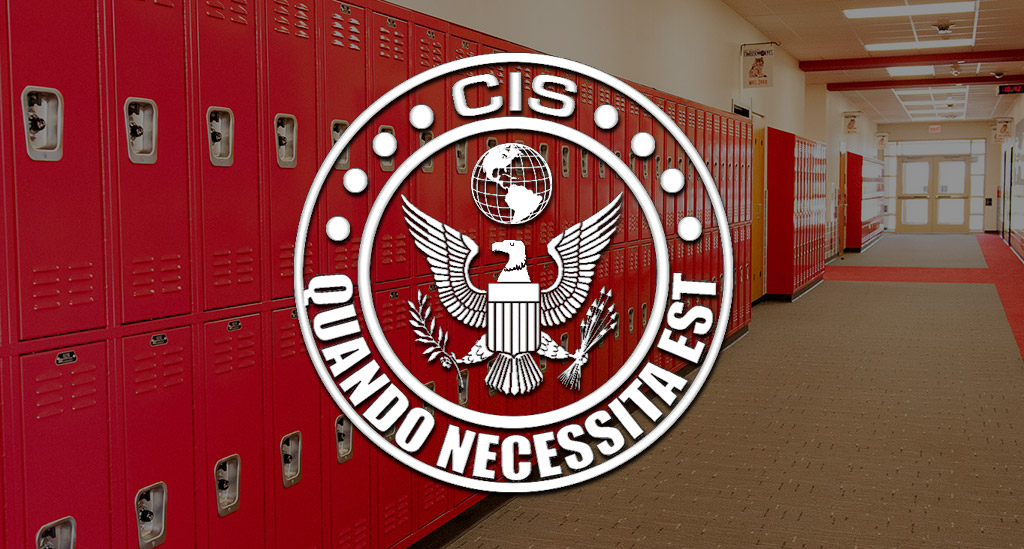GuardianCall™
The First School Panic Alarm & Mass Notification System Designed by School Security Experts
Prior to designing GuardianCall™, we spent years searching the market for an integrated panic alarm and mass notification system suitable for recommendation to our school clients. Although the features of existing systems were quite diverse, none of the available panic alert or mass notification systems ever met our essential standards for simplicity, reliability, and immediate alert to all key parties.
Following is a description of the criteria underlying the design of GuardianCall™ and the significance of its unique features.

Simultaneously alerts all essential parties during time-critical imminent threat emergencies
During imminently dangerous situations, such as active shooter attacks, the time required to initiate response actions has a direct impact on the consequences of the event. This fact cannot be overemphasized. Based on data yielded during studies of active shooter attacks, there is one casualty every 15 seconds while an event is active.
However, due to the absence of systems integration, school emergency plans often require staff members during active shooter events to make a series of notifications using different communication systems. This type of procedure costs precious time and is prone to failure under high stress conditions.
For instance, a witnessing staff member might be required to first dial and report the emergency to 911 and then issue an announcement through the school’s public address system. A senior staff member, then hearing the announcement, is required to issue a redundant mass notification alert through the system’s user interface.
As demonstrated in previous shooting events, this type of sequential and complex notification procedure often requires 2-3 minutes before all critical alerts have been issued.
And if a school doesn’t have a public address system accessible to faculty or a failure occurs because 911 held the staff member on call, or perhaps the senior administrator was off-site, this time is prolonged even further.
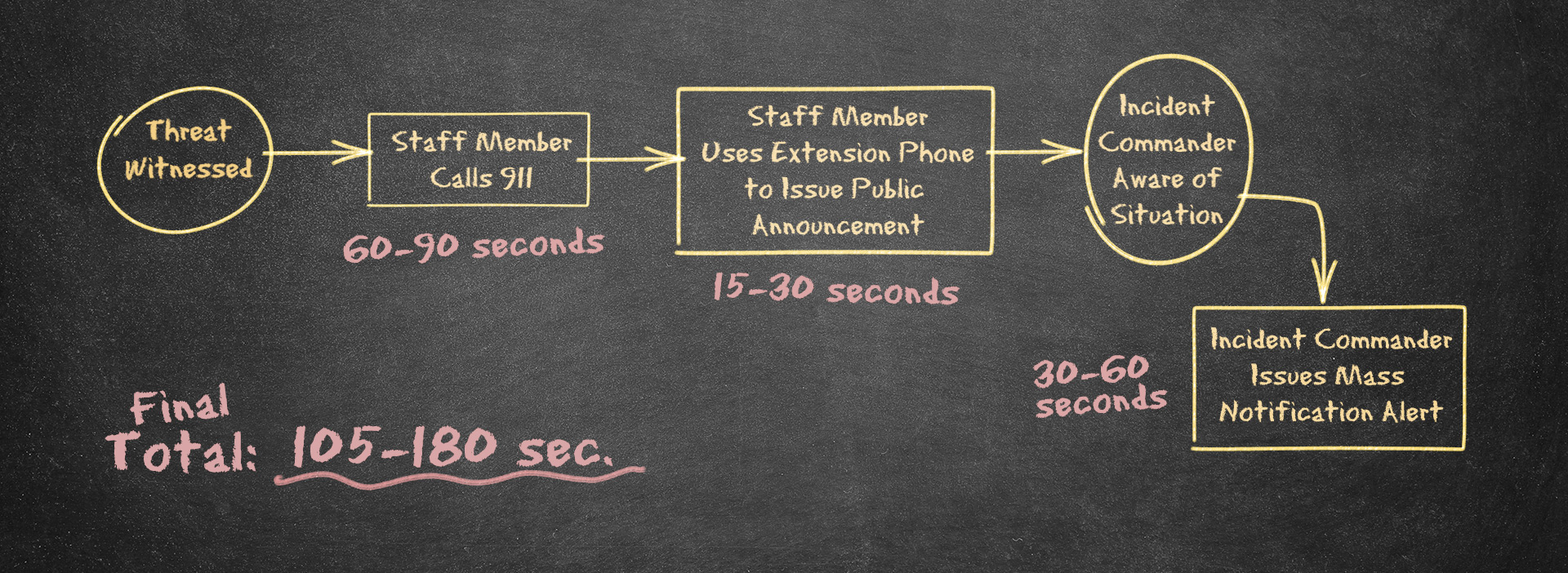
An effective school panic alarm and mass notification system simultaneously alerts all key parties (e.g., faculty, 911, emergency team, etc.) when activated during imminent threat situations.
Provides audible alert to all faculty during life-threatening emergencies
Robust emergency communications systems employ audible announcements as a first means of alert. This is especially important in schools where faculty members are rarely at a computer or monitoring their phones during class.
In school emergency plans, audible announcements are usually facilitated by the school’s public address (PA) system (e.g., paging system, phone system, etc.). In our experience as consultants, reliance on the school’s existing PA infrastructure is often problematic for a variety of reasons.
If the PA system is inaccessible to faculty (as is often the case with paging-type systems) or the school has different PA systems wired in different buildings (a common problem in multi-divisional schools), audible alert is often delayed and unreliable. We have also encountered independent schools over the years which had no installed paging systems and were unable to upgrade due to budget and existing phone contract commitments.
To compensate for this problem, an ideal alert and mass notification system should be capable of emitting an audible notification to all faculty independent from the school’s existing public address system.
An ideal school panic alarm and mass notification system also employs an independent hardware system for audible announcement (as opposed to the teacher’s cell phone). Although phone applications receiving messages through push data transfer are capable of emitting audible sounds, teachers often keep their phones set to silent mode or in a purse or desk during class to avoid interruption by phone calls.
Body-worn at all times and with a panic alarm feature that is ergonomically easy-to-use under life-threatening, high-stress conditions
During life-threatening events, the Sympathetic Nervous System (SNS) awakens and mobilizes energy to facilitate flight-or-fight response. When the SNS is activated, a person’s heart rate often exceeds 200 bpm resulting in deleterious effects such as impairment of cognitive function, memory recall, and fine motor coordination (e.g., hand tremors, fumbling, etc.).
To compensate for this critical problem, an ideal school panic alarm and alert system is instinctive to operate without requiring memory recall or complex manipulation (such as unlocking a phone and navigating to an application).
Mass notification systems that require unlocking a phone and navigating to an application, or activating multiple buttons simultaneously on a pendant, are often unreliable when put to the test of live stress.
An ideal alert device is also body-worn at all times. Alert systems dependent on cell phone applications require faculty members to keep their phones on their physical body during class. If a teacher leaves his/her phone in a car or has difficulty locating it due to SNS impairment, precious time is lost.
For these important reasons, we historically refused to endorse phone-based panic alarm systems to our consulting clients.
EFFECTS OF THE SYMPATHETIC NERVOUS SYSTEM

Provides redundant notification through multiple modes of communication
Although audible alert should always be the first mode of notification in life-threatening emergencies, a robust emergency communication system employs redundant messages for the benefit of staff members who may not have heard the audible announcement.
An ideal mass notification system also allows flexibility in how messages are transmitted. For instance, in circumstances where audible alerts are undesirable (such as discreetly relaying information about a missing student), an ideal system allows messages to be issued solely by SMS text, email, and/or push data transfer.
Pre-Recorded Audio Messages and Written Template Messages
To avoid delay and complication when issuing time-sensitive alerts, initial alert messages should be prepared as pre-recorded mp3 files and pre-written message templates. By having written messages and audio files prepared in advance, persons issuing alerts must only press a single button to initiate the notification process.
As an additional point, body-worn panic alarm systems capable of broadcasting audible emergency messages greatly assist in cases where budget limitations prevent schools with deficient public address infrastructure from upgrade.
GPS Location Capability
An ideal school panic alarm and mass notification system provides emergency team members and school resource officers with the location of the staff member activating the alarm. This feature is crucial in expediting the response of police or armed officers.
Affordable
An ideal school panic alarm and mass notification system does not require major capital expenditure and is priced at a level within the operational budget of most schools. Systems dependent on proprietary communication hubs and speakers installed throughout buildings require major capital investment and often force schools into a long-term commitment without prior test.
Contact us to explore how GuardianCall™ can make your school a safer community.
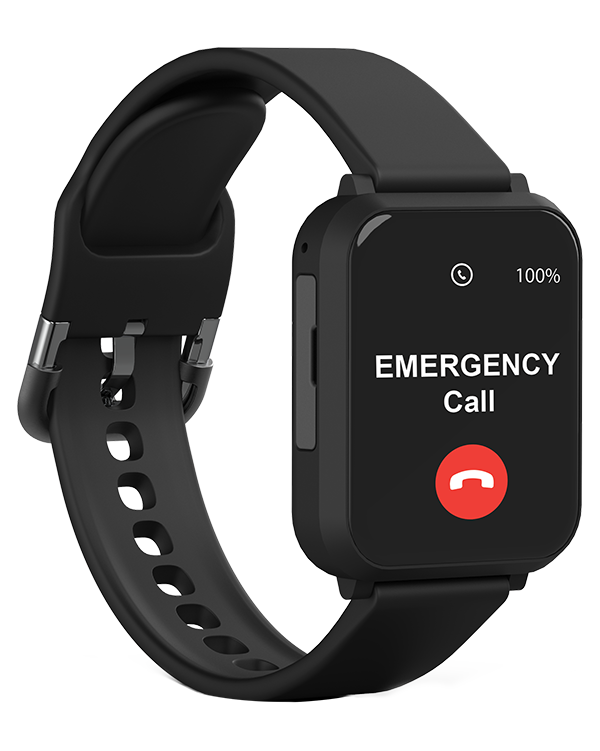
Call us at (800) 247-6055 to speak with a representative or use the following form to request more information.
